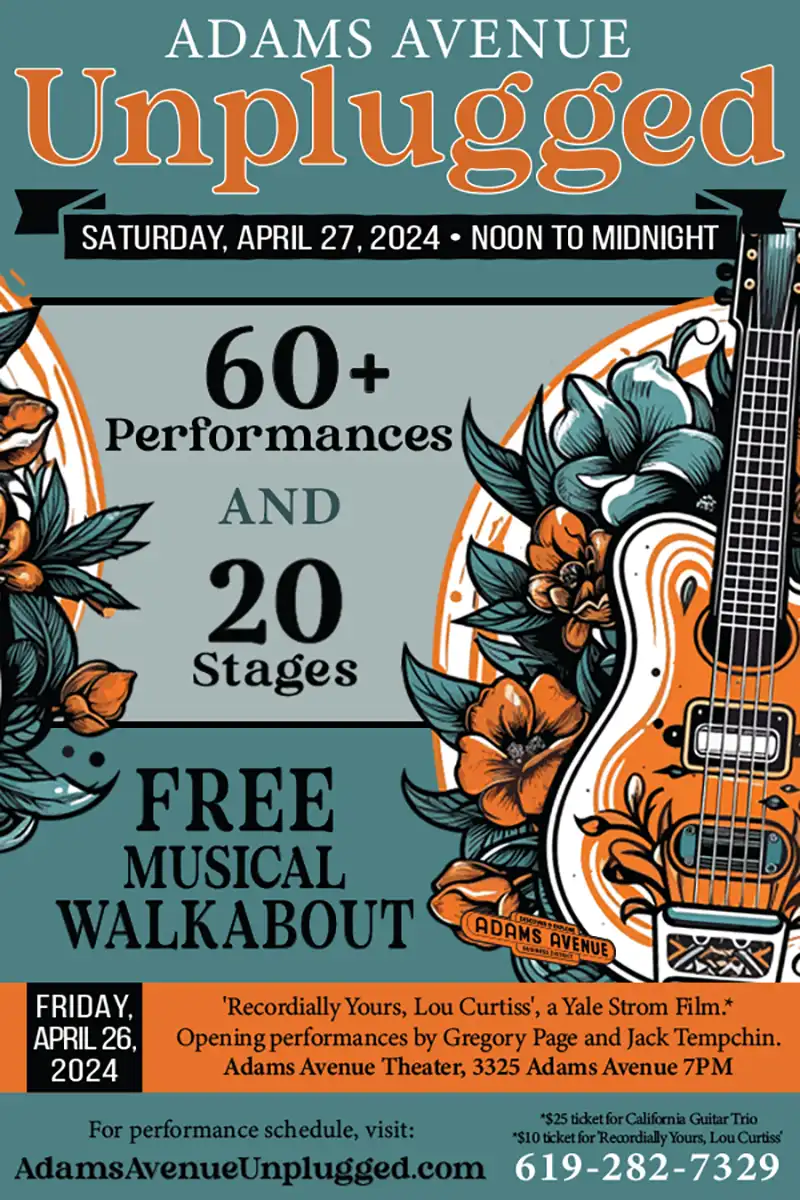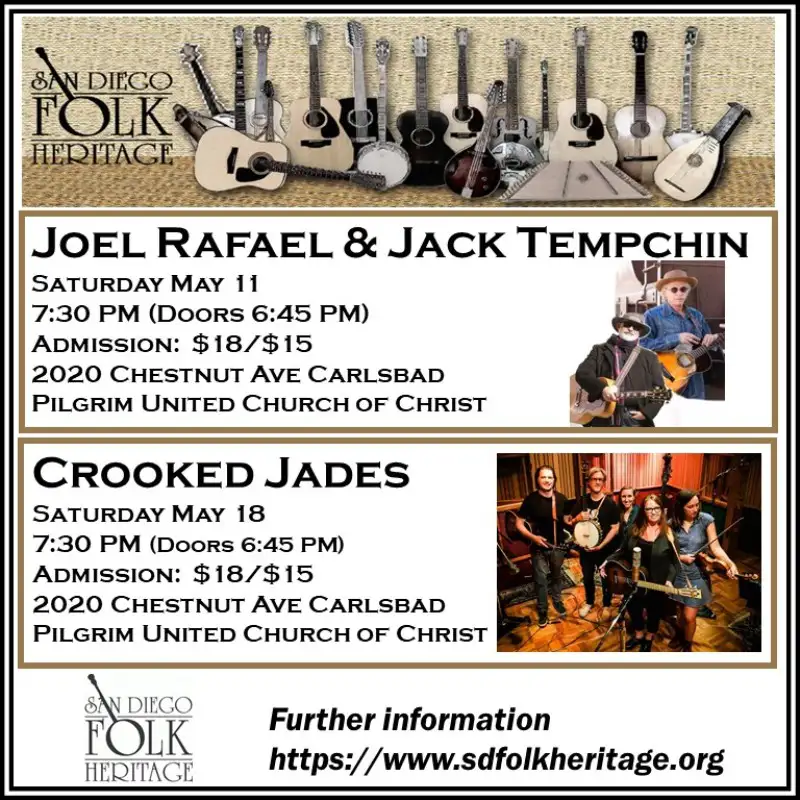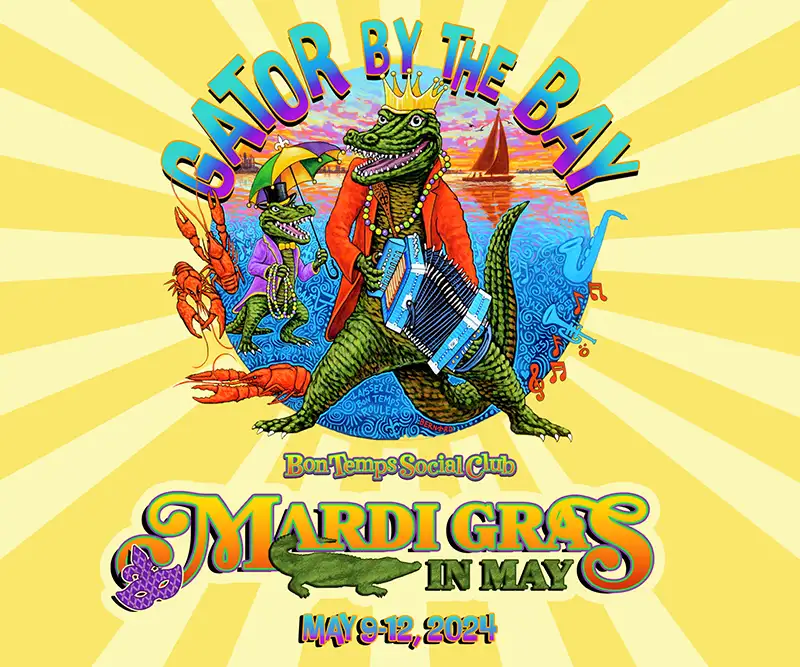Cover Story
Missy Andersen: Singing from the Soul
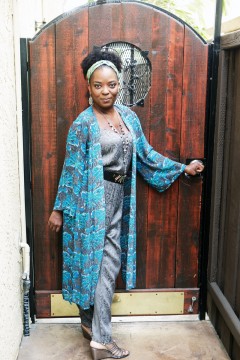
Photo by John Hancock
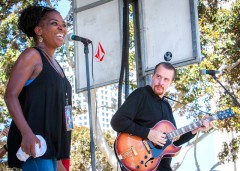
Missy & Heine Andersen. Photo by Jon Naugle.
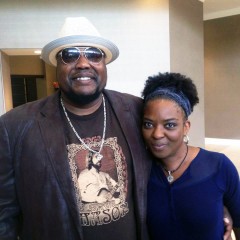
Missy with Sugaray Rayford at the 2015 Blues Music Awards in Memphis.
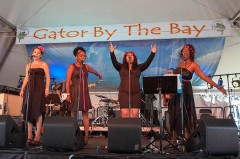
Missy Andersen at Gator by the Bay last month with Mercedes Moore, Danny Watkins, Sharifah Muhammad, Deejha Marie Pope, and Heine Andersen. Photo by Andi Last.
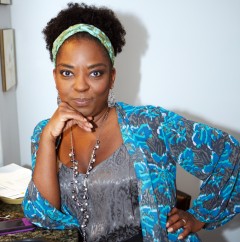
Photo by John Hancock
Dateline: Memphis,TN
Missy Andersen clutches a massive cup of coffee and scans the entire hotel lobby. She’s understandably anxious; in just hours the Blues Foundation will announce the winners of the 2015 Blues Music Awards. Missy is in Memphis, the home of the blues, B.B. King has said, as one of five nominees in the Soul Blues Female Artist category. But it turns out her current angst doesn’t stem from the awards show but from an encounter with one of her longtime idols and fellow nominee, Candi Staton. “I saw her and really wanted to say hello and introduce myself.” Missy says. “But I’m really a shy person and as I approached her, she began to turn in my direction.” Missy begins to shake her head, “I chickened out and at the last minute just veered away, the voice in my head screaming, ‘Abort! Abort!’”
It’s that kind of vulnerability that captivates the Andersen faithful. With Missy, what you see is what you get and her willingness to be open and honest is not just rare, but unheard of in the music business. Later in the day she would overcome her apprehensiveness, meet Candi as well as a few dozen of the other nominees, some old friends, the press, and about a thousand stray blues fans in town for the party. By the end of the night Missy, Candi, and the raucous BMA crowd would be celebrating the enshrinement of three new Blues Hall of Famers, a evening’s worth of tributes and honors, non-stop live blues sets from the best of the best and when it was all said and done, everyone would be praising the selection of the late Sista Monica as the winner in the Soul Blues Female Artist category.
******************
Missy Andersen and her husband, Heine, are literally and figuratively on the same sheet of music. Their latest album, In the Moment, was released last summer and almost a year later it can still be found in the rotation on multiple radio music charts. They write, record, and play together while regularly appearing in support of their friends in other bands throughout Southern California. Their soulful, gospel-tinged arrangements, layered with jazz vocals and jump blues, keep the pair in constant motion with a break-neck performance and unrelenting touring schedule that would kill most normal people.
Before you jump to the conclusion that their journey has been an overnight success story, don’t. It hasn’t. But if you can envision two different artists from opposite sides of the planet finding one another, working tirelessly at perfecting their craft and then, defying all the odds by refusing to give up on the music that they love… well then, your perception of the Andersens is almost picture perfect.
Our conversation started with exactly how they describe the music they make. “I just call it rhythm and blues,” Missy tells me, “just make it that broad. But not like R&B, not like when they turned it into initials. Like rhythm and blues, like it meant before… when it captured everything. It wasn’t jump blues, it wasn’t Chicago blues, and it wasn’t Piedmont or Delta. It was rhythm and blues and everyone had a different style, but it all fell under that umbrella.”
Music has always been a big part of Missy’s life. Born in Detroit but raised in Queens, New York, she readily admits, “I’m a city girl.” She starts to smile. “I listened to a lot of music growing up; my parents had a big record collection — soul, jazz, gospel, R&B, and a little blues. Then, while you’re learning how to sing, you go through different periods. I had a jazz period, an R&B period… and a small country period.”
It was Missy’s grandmother that initially introduced her to the blues. “She was a big blues fan, but I have to be honest,” she begins to shake her head. “When I was growing up I considered blues to be old people’s music. I’m ashamed, but it’s the truth. Sometimes when you’re really close to something you don’t really appreciate it as you would if you learn it later… because it was right there all the time. That’s old people music; I want to hear some new stuff.”
All things considered, the same could be said for America’s acceptance and appreciation for blues. It was all around… the Delta South, Memphis, Texas, Chicago, and Detroit, but it wasn’t fully acknowledged or appreciated by the masses until it was reintroduced to a younger generation by a number of amplified and electrified British youth.
Missy’s husband/band leader/guitarist Heine agrees. “I think that’s very normal and just in general, you know? Stuff that’s in your backyard that you never appreciate.”
Heine, a native of Copenhagen, the capital city of Denmark, says there are noticeable differences between living in Scandinavia and living in Southern California, “You can’t beat the weather here.” He grins and then adds, “I don’t miss the Danish winters.”
The million dollar question is: how did a young man from Denmark get hit so hard by American blues and roots music? “It really started with me being introduced to the music of Jimi Hendrix,” he says. “That caught my attention and then by reading about him I got to learn who influenced him, which was a lot of the old blues guys. You know, even though he took it to [laughing] obviously a different place. I was very fortunate that there was a great library in the town I lived at the time; they had all these artists from the Library of Congress, all the field recordings all the way up to later blues and everything in between. So, basically, I could go in and explore all of these for free. I wouldn’t have been able to buy all this stuff, I could just go in and get the records and listen… and I did.”
Heine says his appetite for blues grew and his further exploration uncovered some of America’s national treasures. “I remember this one album by Mississippi Fred McDowell, a live album he did back in the ‘60s. I think it was on a student campus or something like that, and it had ‘61 Highway’ and ‘Red Cross Store Blues’ and all of those. So that one I really got into and there was a double album, a Blue Note by T-Bone Walker, like a double LP and I got really into that, too.” Heine was discovering, an encyclopedia of who’s who in the blues. He continues, “And Albert King, pretty much his greatest from the Stax years, and I remember this album by Freddie King. Those were the first… and then eventually Son House and I really liked Bukka White! I was very fortunate that they had all those reissues, like the early Delta stuff.
Cultural and geographical backgrounds aside, the couple has managed thus far to avoid most of the pitfalls that surround the business of music. Attending a live show or listening to their CDs, you won’t hear the stereotypical and grossly overworked “classic” and “pop” elements so prevalent in the industry today. They have opted instead to invest a little more time and attention to detail to create something fresh, original, and inspiring. Crazy, I know. But by revitalizing a few standards, adding depth with new arrangements and writing more original compositions, Missy and Heine have personified the phrase, “What was once old is new again.”
“That’s the spirit of it,” Missy says. “The blues is steeped in that experience of telling a story. That’s how it originated. You can’t tell some else’s story, you can’t impersonate someone else and do it the way THEY did it, because you lose your own authenticity. If you don’t somehow get your own story into it, then you’ve missed the whole spirit of the blues. It’s not real blues until you somehow manage to make that story… your story.”
There are so many different styles of music today and almost all of them are probably considered more lucrative than blues or Gospel, or R&B. The blues seem to be a personal choice.
“It’s for me.” Missy agrees. “Once I started listening to blues — first of all when I was trying to sing — being a vocalist is really hard,” she looks at Heine. “And it must be the same for musicians, because when you’re learning how to do it, you mimic other people. And when you can’t get your voice or your fingers or whatever to sound exactly like that person, it’s really discouraging [laughing], especially as a singer. But once I started listening to blues and some of the qualities of their voices I started to realize that ice cream comes in a whole bunch of different flavors. And they’re ALL good. So your flavor doesn’t have to sound like someone else’s… I mean you could be the ‘Chunky Monkey’ [laughing] or something that hasn’t even been discovered. So once I let go of trying to sound ‘pretty’ I actually started to be a little bit more free to just let whatever came out… come out.”
And the flavors that Missy began to sample could not have been any tastier. “Like Gladys Knight, I love the timber of her voice. It’s low and she’s quite an alto but the top of her voice is precious and it’s all the storytelling. I mean, like Aretha Franklin is just great… great! She’s up there all the time and in-your-face, but there are some people that are just subtle in the way they do it. Like Ray Charles whose voice is all crinkly-crackly and has all that texture on it, but it hits you all the way down at your toes.”
For Heine, he says it just comes down to one thing. “To me, it’s just what moves me, really. It could even be something more contemporary… whatever moves me. That’s really the short answer.”
The West Coast beckoned and as well as a job opportunity that Missy found she just couldn’t refuse. Her new job also came with a new title: Juke Joint Jezebel. “We actually added the ‘Juke Joint’ to soften the Jezebel part [laughing]. I came to California to visit a family friend who had joined the Marines. He and his wife lived in Oceanside. I decided to stay because I liked the weather and it was different than New York — more relaxed and laid back. When I got here I thought I wasn’t going to sing; I pretty much thought, ‘Arrgghh! It’s never going to happen for me and I’m too timid… I’m not good enough.’ So I was doing the karaoke circuit [laughing] and got a call from one of my karaoke friends, a flight attendant, who said she was on this flight and Earl Thomas got on and she’s like, ‘Hey, I know you.’ They got to talking and he told her he had this project in mind, so she basically started singing for him right there… in the air. He said he wanted some backup singers and she just started singing. So he goes, ‘Do you have any more like you?’ [laughing] And she just started calling us up and so pretty much that’s how I became a ‘Juke Joint Jezebel.’”
Earl Thomas would end up being a musical connection for both Missy and Heine. “Well, the first time I saw Earl perform was in Copenhagen,” Heine smiles at the memory. “At a blues club over there called Mojo I thought, ‘Oh man, this dude can sing.’” Heine says he and a couple of other musicians he’d been working with in Denmark thought, “‘hey, maybe we ought to try and put something together and back this guy up? That would be cool to do some touring or some gigs over here.’ So we established a connection and the next time he came back to Copenhagen we had learned three sets of his material and were ready to go. So we did some gigs over there and then eventually talked to Earl about maybe coming over here [to America] to play some gigs.”
Missy, a card-carrying Juke Joint Jezebel, was already in the band. “We were already backing [Thomas] up and that’s how we got the Jezebel name. We were doing this spiritual, more like a gospel show, but eventually we started doing more blues with him. It was only supposed to be one show but he liked it so much he said, ‘Let’s do it again… and again and again.’ At some point he brought over the guys, the Danish dudes and he wanted us girls. We all got together and were a ten-person band at one point. We did a lot of shows here in the U.S. and then we went to Europe.”
One big happy family… Missy and Heine meet and then…? “Well then, nothing!” Missy laughs, “…because we had bad social skills. We were together for about six months,” she looks at Heine, “and then you guys went back for three months and then came back for three months. And it wasn’t until maybe a month after that we [the girls] went over to Denmark. I don’t think that Heine and I had even had a conversation that lasted longer than four seconds. ‘Hey Heine, how are you? I’m well.’ That’s it.” [laughing]
Obviously, a man of few words…
How about life on the road? “The best part for me is the traveling,” says Missy. “The touring part is not nearly as glamorous as it sounds. But the experience of different places, cultures, and meeting new people, I say it all the time: I love my job, because I get to do something I have passion for, standing in the front row and meeting new people.”
Foreign audiences can differ from country to country and Missy remembers only too well one particular scenario. “The first time we got to do a Missy Andersen tour in Denmark, we sing a song and when we finished,” Missy counts under her breath, one Mississippi, two Mississippi… “maybe four seconds, maybe five before anyone would actually clap. The excruciating pain, that silence right there. So after the first set I went backstage and I told the guys, ‘I think they hate me!’ And they’re like, ‘No, they don’t. They’re getting into it.’ Missy’s not buying it. “Are you kidding? It was like… quiet, nobody’s doing anything, and nobody’s dancing. And they said, ‘Look at their fingers, look at their feet.’ Then I’m looking, ‘Oh yeah, they’re tapping.’ It would be something as subtle as that.” Missy smiles and adds, “I still do that when we’re in places and I get uncomfortable, I look to see if you’re tapping your foot, even if you’re not looking at me… and I go [rolling her eyes], ‘Whew!’”
Heine agrees but with the caveat “depending on the setting for an American touring artist, it’s more like a concert setting. So everybody is seated and I think you can experience some of that here [in the U.S.] as well. I don’t think it’s a negative thing. I’ve played settings in Europe where people are dancing, like a local blues club in Copenhagen. So, it really depends on the setting and the venue, or if it’s more like a concert or ‘sit down jazz’ or classical music.”
It would be while Missy and Heine were working together in a San Diego band called Tell Mama [Heine was also pulling double duty playing with another Southern California icon, Candye Kane] when they both decided to step into the unknown. “We wanted to do our own… something.” Missy grins. “And do it for our own sensibilities. Heine had kind of convinced me that I could actually stand in the front row. It was a hard transition for me because really, I am timid. Heine convinced me that I could do it. I’m like, ‘I do not have the personality.’ So, it took me awhile.”
The first CD, simply titled Missy Andersen, received critical acclaim right out of the box. Missy said deciding which songs would be on the disc were the least of her worries. “Those were some of the tunes we were already doing. And honestly, on that CD we were upside down. And so almost as soon as I decided to be Missy Andersen, the girl, not Missy Andersen fronting Tell Mama, one of Heine’s bandmates in Denmark said, ‘I can book you a tour.’ I mean we didn’t have anything; we barely had a website; I was still printing business cards on my computer and the ink was still wet. We went to Europe the first time in April and we went right back that same year in November. And in between the tour we recorded. We had two songs and just some of the things we were already doing that we had in our repertoire. And it came out really, really good.”
San Diego guitarist Nathan James was featured on that album as well. “Yeah, that was kind of an accident.” Missy admits. “We were recording at his Sacred Cat Studios and while we were doing it, he got inspired and pulled out his slide guitar and he was just playing along while we were recording. And when we came back and were listening to the playback he did it again. And we’re like, ‘We need that!’”
Missy’s road schedule includes a lot of wineries in and around Southern California. “It’s wonderful,” Missy says. “We started really digging in and beefing up our local gigs. We started out at Miramonte and sometimes we’d get there and there would be 25 people and sometimes there’d be TWO! We’d never know what we were gonna’ get. I think even today, even though we have built up a following, I still expect that when we turn
the corner we only see two cars!” [laughing] “I still expect that!”
In August last year you released your second CD, In the Moment. Heine says, “For me it’s really a mixture of what we listen to at home. There’s definitely some gospel influence on it. There’s a Ray Charles influence and some Bobby Bland from his early period with the horns.”
If you ask Heine to speak to the process of writing music with Missy, he defines it simply as “Collaboration — whatever it starts with — a musical riff or idea of a groove or one chord. Then, okay what could this song be about?” Heine says ideas happen sometimes when you least expect them. “‘Whole Lotta Nuthin’ actually started sitting at the table playing a card game. Missy was looking at her hand and saying, ‘Well, I got a whole lot of nothing.’ I said, ‘Well, that’s a song right there!’ We talked about it, then I started thinking about that B.B. classic, ‘Whole Lotta Love.’ It’s where he’s declaring his love… but what if you did the opposite? I have nothing for you, a whole lot of nothing. The tunes go through a lot of transformations. It started sort of like that B.B. up-tempo shuffle, and then we tried for a short period where we took it into more like a jump blues, sort of a Ruth Brown thing. But that’s not quite it, what if we tweaked it with more of a New Orleans kinda’ second-line thing? And that’s when it started coming to life.”
With a sense of giving back, both of the Andersens have been involved with Blues in the Schools programs and Missy says, “That was so much fun. Everyone has a different approach to it, but we tried to come up with a presentation that used their language and that they could grasp. And to understand how blues influenced the music that they listen to today. We did it for quite a few years.”
Last January, Missy and Heine had been slated to represent San Diego at the 2015 International Blues Challenge in Memphis, but those plans changed in early December. Missy explains, “I received a Blues Music Award nomination in the Soul Blues Female Artist category. That nomination, however, made me ineligible to compete in the upcoming International Blues Challenge, so Heine and I were subsequently disqualified. No worries though. Ben Powell competed in our stead. So yeah, I was disqualified from the IBC because I received a BMA nomination! I’d say that’s a pretty good problem to have.”
So this wouldn’t be a complete blues interview without at least one story about the craziest club or weirdest bar you’ve ever played. Heine obliges. “We played this club and, basically, we played for the bartender and one regular all night. And when the night was done we said, ‘Well you sure don’t have a lot of people in here.’ What happened was the place had just reopened after a boyfriend of one of the waitresses had walked in with a shotgun and shot her right there in the bar. So people were afraid to come back. We were playing after it just opened again.” [laughing]
Music is such a big part of their existence, but did either of them ever give much thought to what if it weren’t? “I think we’re just living the life.” Missy beams. “I’ve always wanted to sing and if Heine hadn’t come along I would still be doing what I was doing, and just trying to find an outlet for music some other way. Doing backup vocals for some other person or studio work, but now I’m in the front and I didn’t even have to find another personality to do that. I’ve managed to stay that same awkward, quirky girl.”
And the man of few words just smiles and says, “I really didn’t have a Plan B.”
See Missy live at Humphrey’s Backstage Live on a couple of Tuesdays in June. Check the calendar for details.


